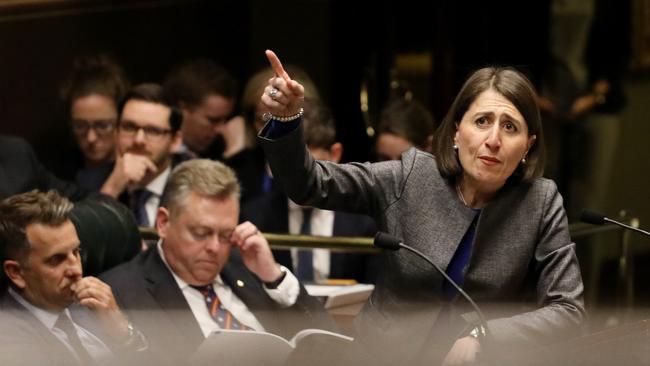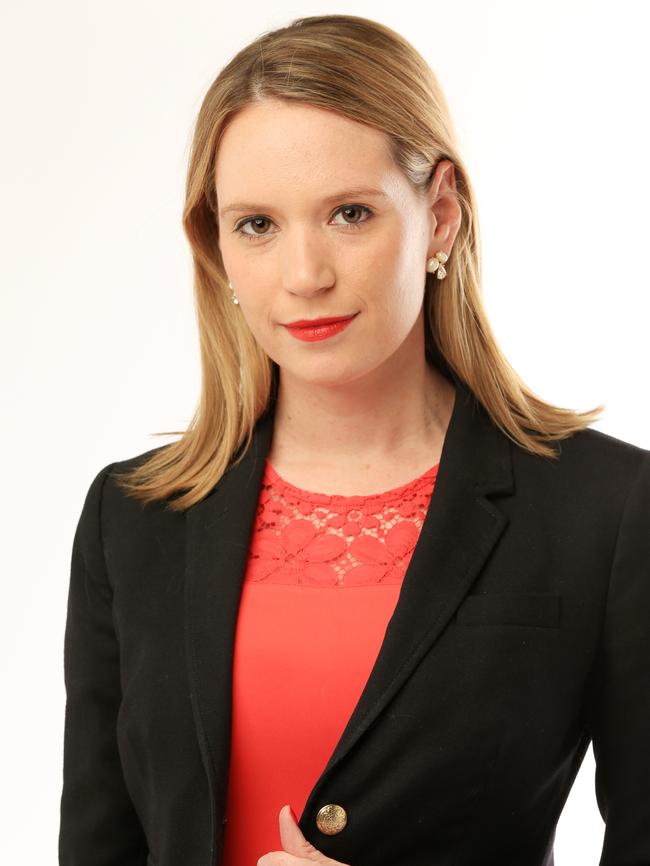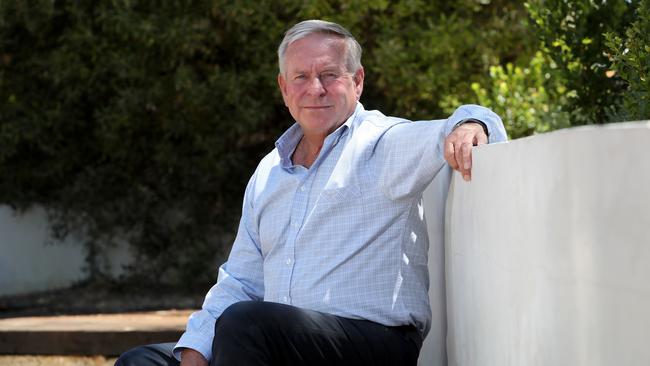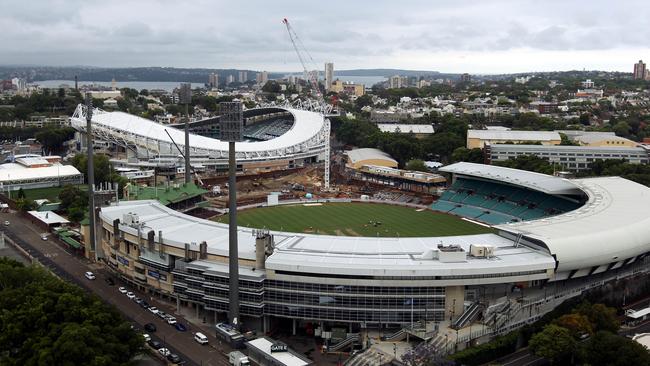Premier Gladys Berejiklian finds her voice in the debate over razing and rebuilding Sydney’s stadiums
THE stadiums debate has taken its toll on the government, but Premier Gladys Berejiklian has found her voice in the fight and, just as well, she’ll need it to sell it, writes Anna Caldwell.
Opinion
Don't miss out on the headlines from Opinion. Followed categories will be added to My News.
GLADYS BEREJIKLIAN has found new fire, and — spoiler alert — she’s going to need it.
The first sign came last Friday when the Premier decided that she’d had enough of rumours she was considering a backflip on her $2 billion-plus plan to knock down and rebuild Sydney’s two biggest stadiums. In a fierce press conference, Berejiklian swatted away repeated suggestions she was going to back down.
“That’s my policy,” she said.
“How much more black and white can I get?”

It was to this fiery MO she returned again yesterday during Question Time.
Over and over, Berejiklian repeated her mantra that it is the Premier’s job to do what is best for the state, that was what she was doing, and that is what she will continue to do — no matter how much the naysayers pillory her.
But more than just barging through, the Premier also conceded she needs to find a better way to explain to the community just why her ideas were the best for NSW.
Bingo.
This election will come down to Berejiklian’s ability to sell her message on stadiums and her broader achievements.
If Berejiklian is going to get NSW where she wants it to be she will need, urgently, to get the electorate on board for the journey.
And that’s where she’ll need her fire. Yesterday’s Newspoll made no bones about it.
On two-party preferred terms, Berejiklian is deadlocked with the Opposition a year out from crunch time.
If the election were held today, the government would be looking at a 4.3 per cent swing against it — a recipe for a minority government beholden to a volatile crossbench.
RELATED
NRL WANT FANS TO SEE BENEFITS OF NEW STADIUMS

That’s why this election will come down to Berejiklian’s ability to sell her message on stadiums and her broader achievements.
This week, I turned to someone who might know exactly what it’s like to be a premier under political pressure selling a costly stadiums plan to a booming state.
Enter ex-West Australian premier Colin Barnett.
One of the biggest infrastructure legacies of his nine-year premiership is the newly opened Perth Stadium.
That’s right, the one sporting types and infrastructure nerds all over the country are going nuts for right now.
Talk to Barnett and you quickly get a sense of how proud he is of the place he never got to open.
But here’s the plot twist: Barnett told me that his advice to Berejiklian was that it might just be too hard to sell two new stadiums to the NSW people at the same time.
Barnett believes fundamentally, like Berejiklian, in the social and economic benefits of sporting infrastructure. He thinks NSW can afford to build two as well.
The former premier — a man who arguably would be the biggest believer in the stadiums-for-the-people argument — also believes that the task of selling a two-for-one deal might be too big an ask.
Now that’s not to say Barnett doesn’t believe Sydney should have two new stadiums. He does — he believes fundamentally, like Berejiklian, in the social and economic benefits of sporting infrastructure. He thinks NSW can afford to build two as well.
But selling the idea politically? Well that’s another story.
“The truth is NSW can afford to rebuild them both at once but it will draw out more criticism,” Barnett told me.
“Don’t try to do two at once. You risk seeming like you are splashing too much cash. Do the older one first, put the other on hold, then go back later and do the second.”

Barnett built his stadium in circumstances remarkably similar to those Berejiklian faces today.
Western Australia was riding high in the mining boom. He had money to burn, and felt, fundamentally, that he wanted to create something “tangible” for the people.
Barnett ended up delaying the stadium so he could build a children’s hospital as well — a spending and infrastructure policy combination he believes “got the balance right” and made it harder for Labor to poke holes.
“We’d been through an extraordinary boom in mining and natural gas — there had to be tangible results for the people at a time of hectic activity … something that reflects a period of prosperity,” he told me.
Barnett’s insight does not mean Berejiklian should back away from her convictions. To do so now would be politically poisonous after staking so much on her building-NSW vision for the state.
But Barnett’s wise remarks should be taken to reveal the brutal scale of the fight ahead. Indeed, Berejiklian will need to be a better politician than those who went before her.
The Labor Opposition is running with a figure that the stadiums rebuild will cost $959 per family if it was spread out across the state.

This, combined with their argument that the money should be spent on schools and hospitals, is powerful politics that evokes the kind of emotion that turns voters against you in a ballot box.
But Berejiklian has an equally powerful response.
In an interview with 2GB’s Ben Fordham on Monday, she retorted that in fact the government had built 700 new classrooms already and planned to build 1500 in the next four years.
“The previous Labor government was closing schools … they had a net loss of classrooms,” she said.
True. You can see why the opposition to her ambitious building project would be painfully frustrating.
Just as she can stake her record on building education as she did here, she can make similar arguments over hospital investments and transport.
To Fordham, Berejiklian went on: “Of course we know where the priorities are — of course schools and hospitals matter the most. Every bit of logic tells you that.
“But also, it’s important to make sure (you) aren’t falling behind on other bits of infrastructure that allow NSW to be the tourism and jobs capital of Australia.”
It’s a clear, powerful “NSW-should-have-it-all” message.
It’s sale of this concept that will be the test. And that will take the fire we’re seeing from her now.


